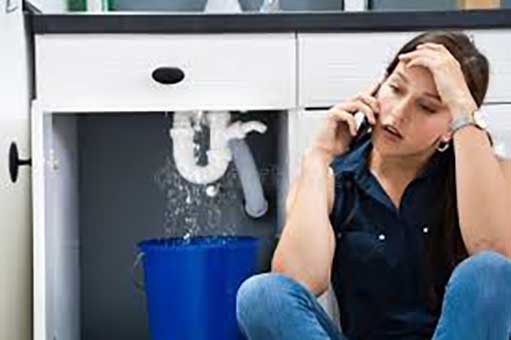
Home leaks are a common issue for many homeowners and renters. They can lead to severe damage if not identified and addressed promptly. Understanding the potential causes and signs of leaks can help you take proactive steps to protect your property. This guide will provide you with comprehensive knowledge on how to detect, prevent, and manage leaks in your home efficiently.
Common Sources of Home Leaks
Home leaks can originate from a variety of places within and around your property. Identifying the common sources is the first step in effective leak detection. Here are some of the most typical causes:
- Plumbing Systems: Leaks can occur in pipes, faucets, and plumbing fixtures. These are often caused by wear and tear, poor installation, or corrosion.
- Roof and Gutters: Damaged, missing, or improperly installed roofing materials and clogged gutters can allow water to seep into your home.
- Windows and Doors: Improperly sealed or damaged windows and doors can let water in during heavy rains.
- Appliances: Household appliances such as washing machines, dishwashers, and water heaters can develop leaks due to malfunction or connection issues.
- Basements and Foundations: Cracks in the foundation or basement walls can lead to water intrusion, especially in homes with poor drainage systems.
Detecting Water Leaks in Your Home
Detecting water leaks early can prevent significant damage and costly repairs. Here are some methods to identify leaks within your home:
- Monitor Water Bills: An unusually high water bill can be an indication of a hidden leak.
- Check Water Meter: Turn off all water fixtures and appliances, and observe the water meter. If it continues to move, you likely have a leak.
- Look for Water Stains: Water stains on ceilings, walls, and floors are common signs of leaks. Pay attention to discoloration and bubbling paint.
- Inspect for Mold and Mildew: Persistent dampness can lead to mold and mildew growth, which can also indicate a leak.
- Listen for Dripping Sounds: Quiet your home and listen for the sound of dripping or running water, which can point to a leak.
Tools and Techniques for Leak Detection
Utilizing the right tools and techniques can make leak detection more accurate and efficient. Here are some useful tools and methods:
- Leak Detection Devices: These electronic devices can detect hidden leaks by sensing moisture levels or listening for pressure changes in the pipes.
- Thermal Imaging: Thermal cameras can detect temperature variations caused by water leaks behind walls and ceilings.
- Moisture Meters: These handheld devices measure the moisture content in walls, floors, and other materials to locate leaks.
- Fluorescent Dye Test: Adding non-toxic fluorescent dye to the water system can help trace leaks in pipes and fixtures.
Preventative Measures to Avoid Future Leaks
Preventing leaks begins with regular maintenance and inspections. Here are some preventative measures to help you avoid leaks in the future:
- Regular Inspections: Periodically inspect plumbing systems, roofing, windows, and doors to ensure they are in good condition.
- Proper Drainage: Maintain your gutters and downspouts to ensure proper drainage away from your home.
- Seal Cracks and Gaps: Use caulk and sealants to fill any cracks and gaps in walls, foundations, and around windows and doors.
- Appliance Maintenance: Regularly service and inspect household appliances to prevent leakages.
- Pipe Insulation: Insulate exposed pipes, especially in colder climates, to prevent freezing and burst pipe emergencies.
Professional Help for Home Leak Detection
Sometimes, detecting and fixing leaks requires professional expertise. Engaging a professional plumber or leak detection specialist can ensure that leaks are accurately identified and effectively addressed. Professionals use advanced tools and techniques that may not be available to homeowners and can provide peace of mind by ensuring that the problem is thoroughly resolved.
Addressing the Detected Leaks
Once a leak is detected, it’s crucial to address it promptly to prevent further damage. Here’s what you need to do:
- Turn Off the Water Supply: If the leak is from a plumbing fixture, shut off the water supply to prevent further water damage.
- Remove Water and Dry the Area: Use towels, mops, or wet/dry vacuums to remove standing water and dry the affected area to prevent mold growth.
- Make Necessary Repairs: Depending on the source of the leak, repairs may involve replacing damaged pipes, sealing cracks, or fixing faulty appliances.
- Contact a Professional: For significant or complicated leaks, contact a professional plumber to ensure proper repair and remediation.

































